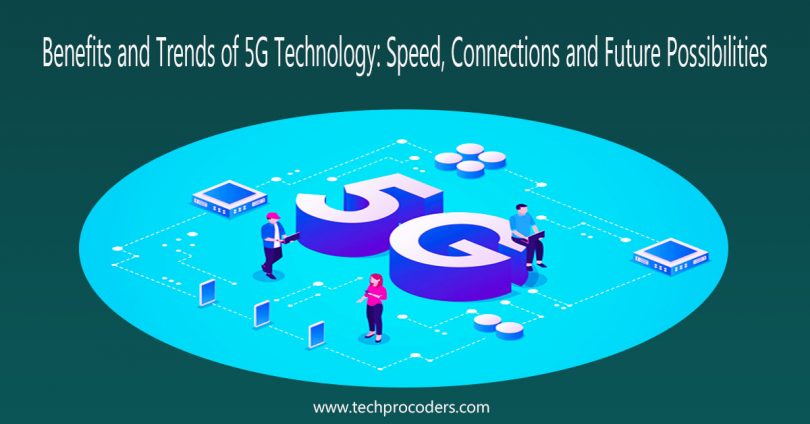5G has the potential to alter how we conduct business fundamentally. Its ability to support highly rapid download speeds makes obtaining anything from the internet considerably easier. A new era of Internet of Things (IoT) gadgets may also be ushered in by 5G technology. Overall, 5G offers a number of benefits that could have a favorable influence on how we use technology every day.
Supercharged Speed
One of 5G’s most praised advantages is its speed (speed thrills everyone). Data rates up to 10 Gbps are anticipated for 5G networks, which is astonishingly 100 times faster than 4G LTE. In real-world terms, this means that a full HD movie may be downloaded on a 5G network in a couple of seconds instead of several minutes on a 4G network.
In addition to improving user experiences for data-intensive activities like streaming and gaming, this increased speed will also open up new possibilities for applications like virtual reality and augmented reality.
Instant Connections: Minimized Latency in 5G Networks
In comparison to the 20–70 milliseconds experienced in 4G networks, latency, which refers to the wait before data transfer begins following an instruction for its transmission, is anticipated to decrease to roughly 1 millisecond or less in 5G networks. Applications requiring quick answers, such as driverless vehicles, remote surgery, and e-sports, depend on this almost instantaneous connection.
Expanding Capacity: Empowering 5G Networks for More Devices
The capacity of 5G networks is much higher than that of 4G networks. This shows that they can support more devices, including sensors, IoT devices, smartphones and tablets, without slowing down. This is especially important in congested areas and at events where many of people are concurrently looking for network connectivity.
Efficiency Elevated: The Power of 5G Networks
5G networks beat 4G networks in this regard because they were designed for efficiency. They make use of modern innovations like network slicing, which let operators create numerous virtual networks within a single 5G physical network. As a result, network resources can be distributed more wisely, ensuring that each user obtains the quality of service they desire.
Pioneering the Future: 5G Enabling Next-Gen Technologies
Undoubtedly the most exciting aspect of 5G is the promise it has for enabling modern technologies and applications. The combination of 5G’s fast speed, low latency and large capacity puts it as a key enabler for Industry 4.0, the Internet of Things, autonomous vehicles and smart cities. With 5G, a wide range of opportunities opens up, from self-driving cars and remote surgery to a new generation of intelligent homes and factories.

Exploring 5G Trends: Global Expansion, Adoption and Health Considerations
Rapid 5G Expansion: Mapping the Global Network Growth
The OOKLA 5G MapTM tracks the spread of 5G in major cities around the world. Simply keeping track of things over a few weeks reveals how quickly telecom companies are working to make 5G available. Currently, commercial 5G availability is available across five continents at over 142,000 stations.
5G Adoption Trends: Enterprises and Private Networks
According to Research and Markets’ 5G Thematic Intelligence Report 2023, businesses will increasingly use wireless connectivity for branch offices as the hybrid workplace evolves.
In addition to indoor Wi-Fi settings, private 5G networks in particular provide edge computing and applications like AR, VR, video analytics and autonomous robotics.
What are possible Impacts of 5G on Health?
The potential consequences of 5G on human health are one of the topics that have generated a number of more heated debates. Although previous claims that 5G could weaken the immune system or cause viruses have been extensively debunked, certain worries about possible cancer risks due to chronic radiation exposure still exist.
The levels of radiofrequency radiation that people are exposed to through 5G, according to the FDA, WHO, and other health research and advisory groups, are lower than the limits specified by global regulations. They are therefore not anticipated to have an adverse effect on health.
Summing up
5G technology is reshaping how we do business and use technology. It delivers improved connections, a new era of IoT gadgets and extremely high download speed. It opens the door for better streaming, gaming and upcoming technology with speeds 100 times faster than 4G. Self-driving cars and other innovations are made feasible by nearly instant connections, while improved capacity assures seamless connections in congested locations. Smart cities, IoT and other technologies are made possible by 5G, which is efficient in design. Despite disagreements over the effects on health, international laws suggest that there is little harm. In essence, 5G is changing technological capabilities and trends.







